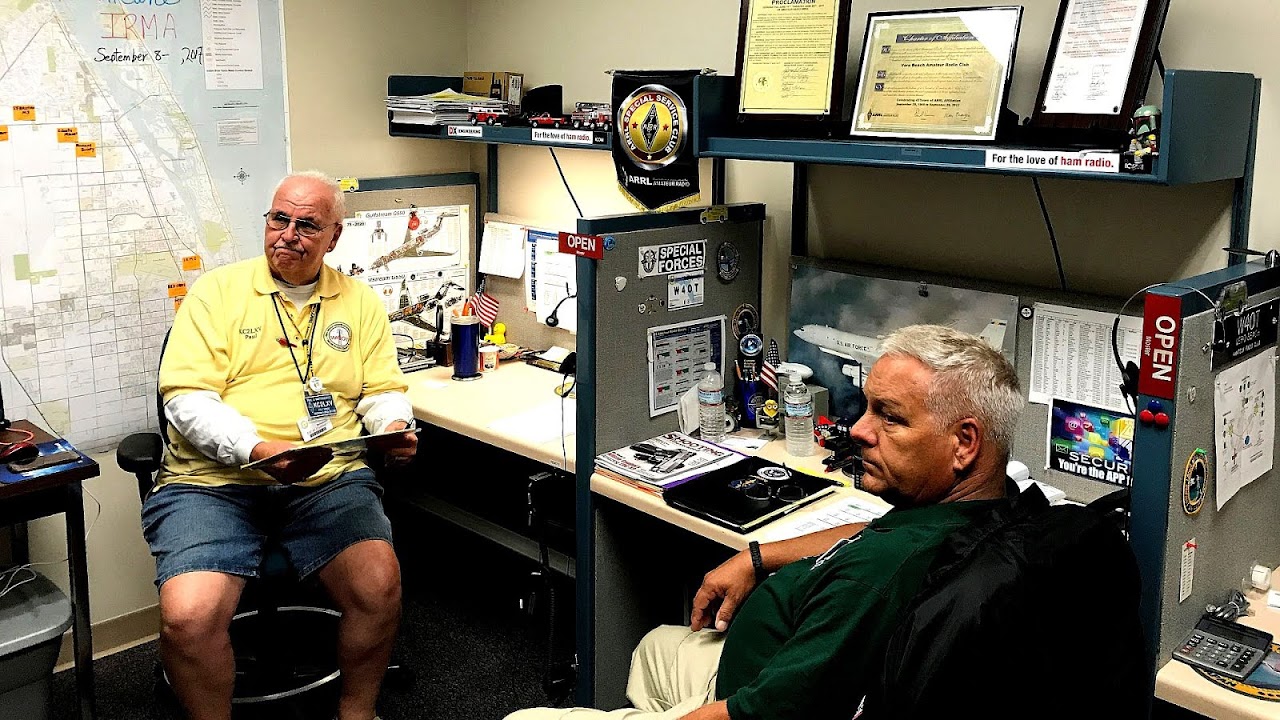
An amateur radio operator is someone who uses equipment at an amateur radio station to engage in two-way personal communications with other amateur operators on radio frequencies assigned to the amateur radio service. Amateur radio operators have been granted an amateur radio license by a governmental regulatory authority after passing an examination on applicable regulations, electronics, radio theory, and radio operation. As a component of their license, amateur radio operators are assigned a call sign that they use to identify themselves during communication. There are about three million amateur radio operators worldwide.
Amateur radio operators are also known as radio amateurs or hams. The term "ham" as a nickname for amateur radio operators originated in a pejorative usage (like "ham actor") by operators in commercial and professional radio communities. The word was subsequently adopted by amateur radio operators.

Maps, Directions, and Place Reviews
Demographics
Few governments maintain detailed demographic statistics of their amateur radio operator populations, aside from recording the total number of licensed operators. The majority of amateur radio operators worldwide reside in Japan, the United States, Thailand, South Korea, and the nations of Europe. The top five countries by percentage of the population are Japan, Slovenia, Taiwan, South Korea and Thailand. Only the governments of Yemen and North Korea currently prohibit their citizens from becoming amateur radio operators. In some countries, acquiring an amateur radio license is difficult because of the bureaucratic processes or fees that place access to a license out of reach for most citizens. Most nations permit foreign nationals to earn an amateur radio license, but very few amateur radio operators are licensed in multiple countries.
Gender
In the vast majority of countries, the population of amateur radio operators is predominantly male. In China, 12% of amateur radio operators are women, while approximately 15% of amateur radio operators in the United States are women. The Young Ladies Radio League is an international organization of female amateur radio operators.
A male amateur radio operator can be referred to as an OM, an abbreviation used in Morse code telegraphy for "old man", regardless of the operator's age. A female amateur radio operator can be referred to as a YL, from the abbreviation used for "young lady", regardless of the operator's age. XYL was once used by amateur radio operators to refer to an unlicensed woman, usually the wife of a male amateur radio operator; today, the term has come to mean any female spouse of an amateur radio operator, licensed or not. Sometimes the wife of a ham operator is called a YF (wife). Although these codes are derived from English language abbreviations, their use is common among amateur radio operators worldwide. Incidentally, the most common language heard in the HF amateur bands (the bands below 30 MHz that support worldwide communications) is English.
Age
In most countries there is no minimum age requirement to earn an amateur radio license and become an amateur radio operator. Although the number of amateur radio operators in many countries increases from year to year, the average age of amateur radio operators is quite high. In some countries, the average age is over 80 years old, with most amateur radio operators earning their license in their 40s or 50s.
Some national radio societies have responded to this by developing programs specifically to encourage youth participation in amateur radio, such as the American Radio Relay League's Amateur Radio Education and Technology Program. The World Wide Young Contesters organization promotes youth involvement, particularly amongst Europeans, in competitive radio contesting. A strong tie also exists between the amateur radio community and the Scouting movement to introduce radio technology to youth. WOSM's annual Jamboree On The Air is Scouting's largest activity, with a half million Scouts and Guides speaking with each other using amateur radio each October.
Ham Radio Jobs Video
Silent Key
When referring to a person, the phrase Silent Key and its abbreviation SK indicates an amateur radio operator who is deceased. The procedural signal "SK" (or "VA") has historically been used in Morse code as the last signal sent from a station before ending operation, usually just before shutting off the transmitter. Since this was the last signal received by other operators, the code was adopted to refer to any amateur radio operator who is deceased, regardless of whether they were known to have used telegraphy in their communications.
Source of the article : Wikipedia


EmoticonEmoticon